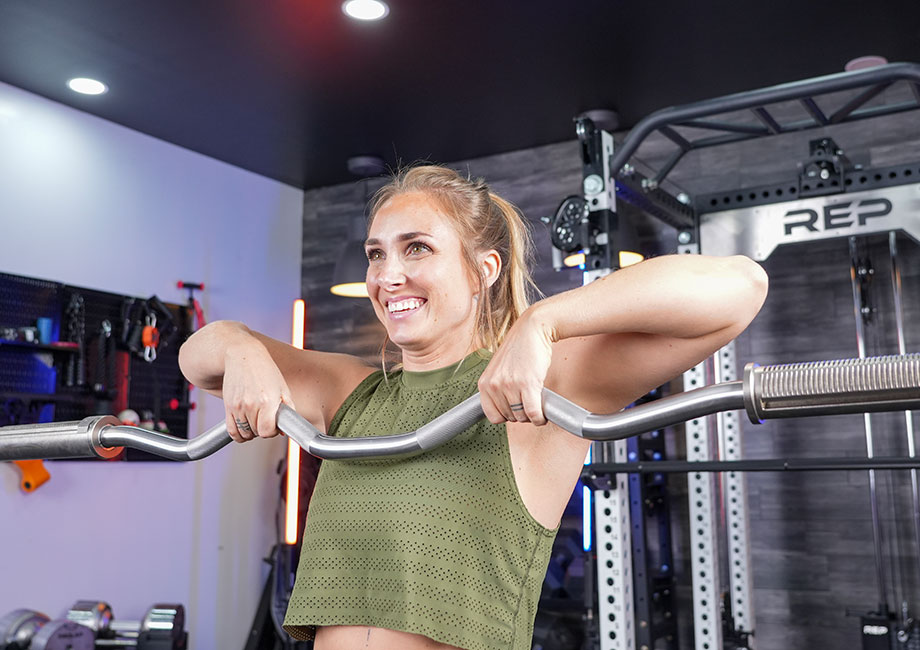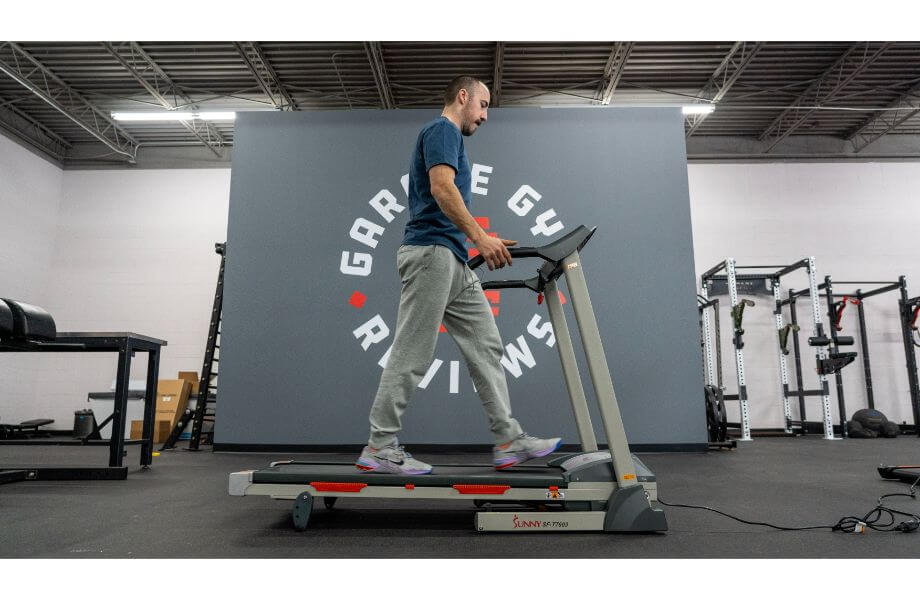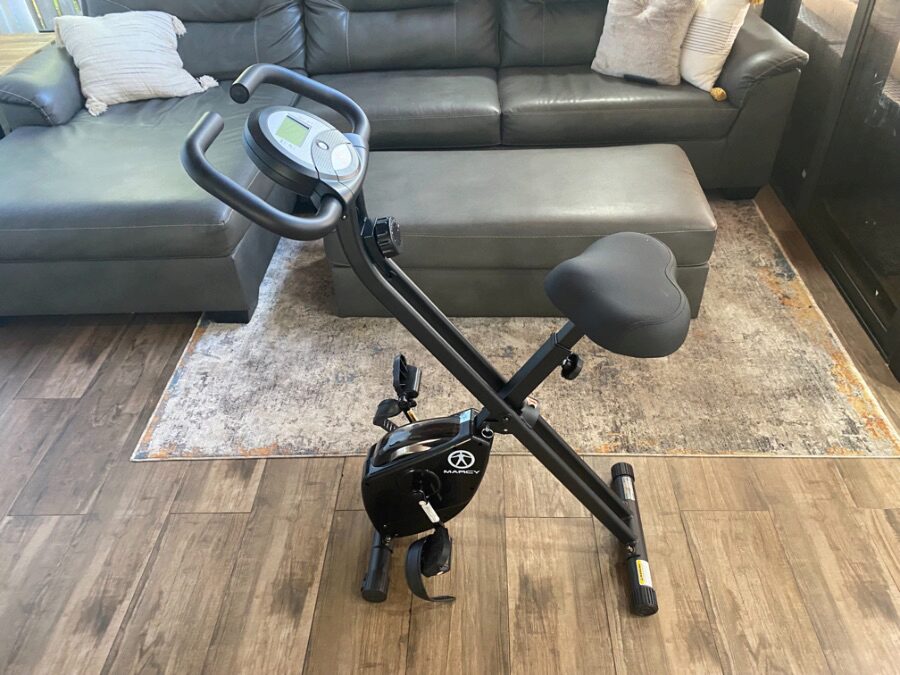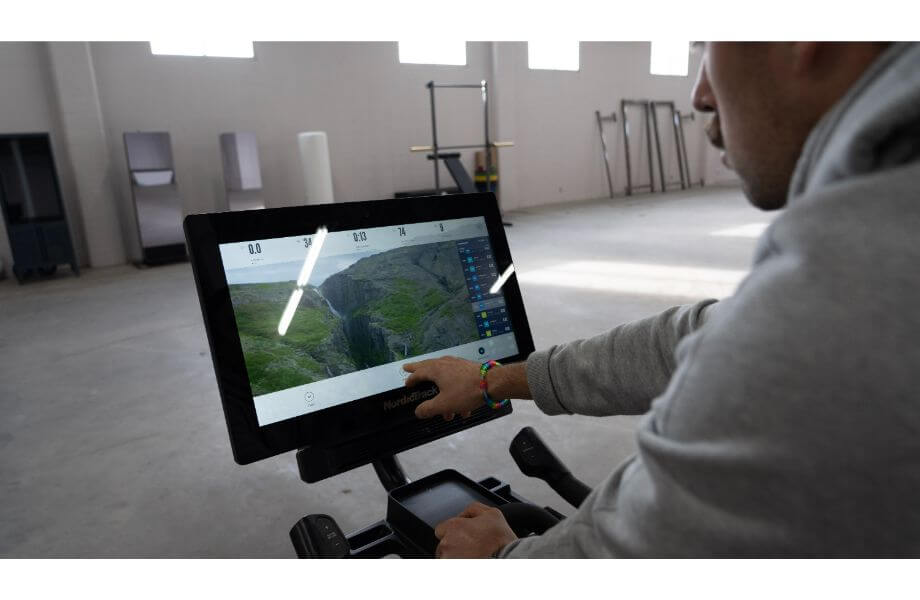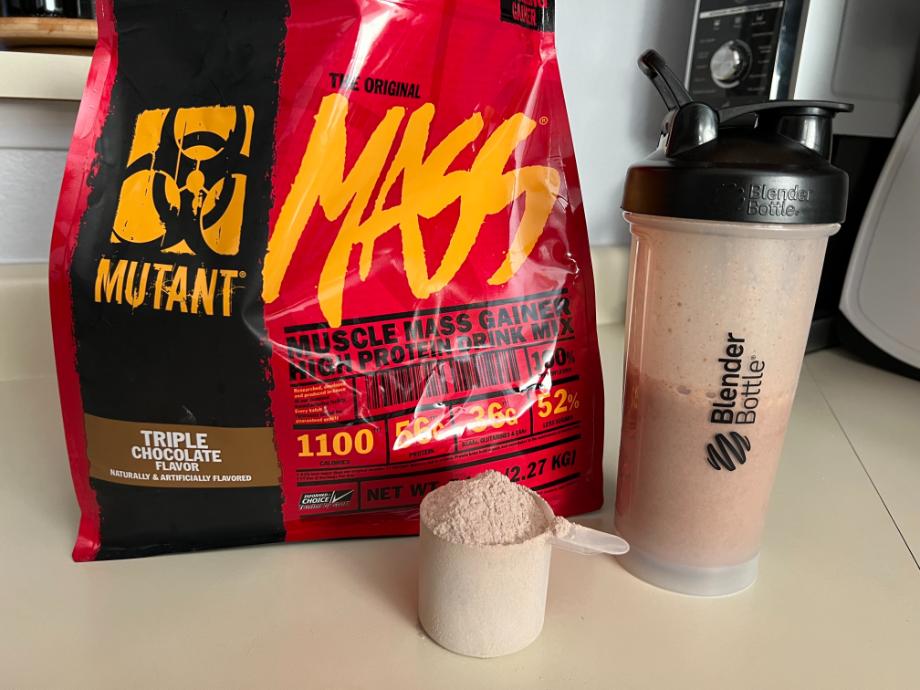The upright row is integral to any upper body strength training program. It’s a simple movement —making it super accessible to beginners and seasoned lifters—and targets muscle groups in the upper back, shoulders, and upper arms to build muscle size, strength, and endurance. It’s also adaptable for whatever equipment you have on hand, whether you’re doing a barbell, dumbbell, or upper-body kettlebell workout at home or in the gym.
Kate Meier, NASM-CPT, USAW-L1, CF-L1, and GGR head of content, breaks down this classic back and shoulder exercise, giving you step-by-step instructions, trainer tips, mistakes to avoid, and variations that’ll keep your upper body workout routine varied and fresh!
RELATED: Best Shoulder Exercises
How to Do The Upright Row
- Stand with your feet shoulder-width apart.
- Hold a barbell in front of your body using an overhand grip.
- Take a deep breath, brace your core, and exhale as you pull the barbell upwards.
- Squeeze your deltoids and trapezius muscles at the top.
- Slowly return the barbell to the starting position, controlling its descent.
Note: The barbell upright row is described above, but you can also perform the same motion with a pair of dumbbells, a kettlebell, a cable machine, or a resistance band.
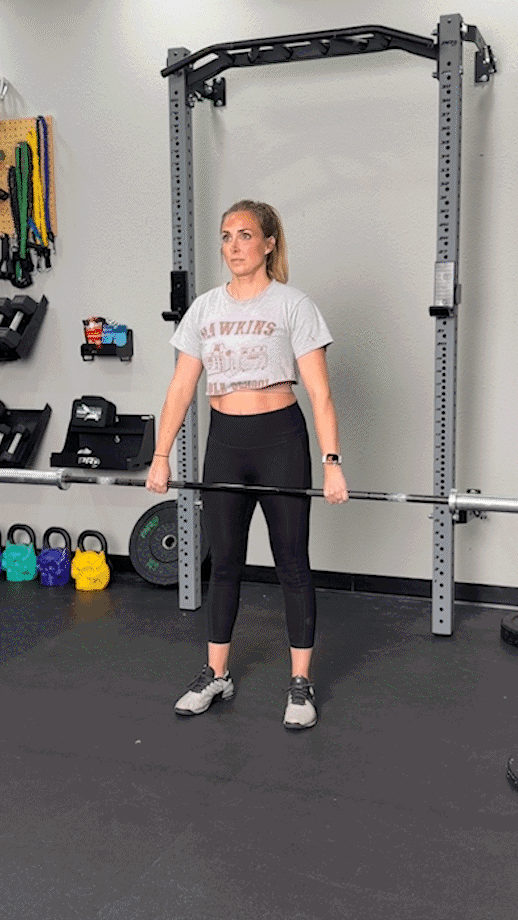
Trainer Tips for Form
The upright row is simple enough, but there are a few cues to keep in mind if you’re trying to nail the form. Here are Kate Meier’s top trainer tips for proper upright row form.
Keep the Bar Close
The most efficient and effective way of performing the upright row features a perfectly straight bar path. Keeping the bar close ensures there’s no arc in the bar path and guarantees that the correct muscles, namely the deltoids and trapezius, are receiving the lion’s share of muscle activation.
RELATED: Trap Exercises
“Keeping the bar close to the body allows us to generate the most power during our lift,” says Kate Meier, CPT, USAW-L1, CF-L1. “It also reduces our risk of injury by limiting the amount of sheer force placed on our wrists and elbows throughout the exercise’s range of motion.”
So, focus on pulling the bar straight up during the concentric phase, letting your elbows flare out to the sides as the bar rises to shoulder height. Then, slowly guide the bar back to the starting position, again ensuring a completely straight bar path that allows the barbell to stay nice and tight into the body.
Soft Bend in the Knees
Your upper body joints aren’t the only ones susceptible to injury during the upright row. Your knees are put in an increasingly precarious position as you progress to heavier and heavier weights. To compensate for that increased resistance, you’re going to want to keep a soft bend in your knees to avoid hyperextension and reduce the stress on the knee joint during this lift.
“The bend should be very slight,” says Kate. “Overly bent knees take the knees and hips out of alignment, contribute to poor posture, and have other negative effects on the lift as well. Use a very slight bend to protect your knees and, when in doubt, consult a certified personal trainer to determine if your form looks correct.”
Control the Range of Motion
Some exercises benefit from a little momentum, including kettlebell swings, box jumps, and Olympic weightlifting moves like the snatch, clean, and jerk. Using momentum during the upright row essentially turns the movement into a high pull, a full-body exercise that builds explosive power and strength in the shoulders, back, arms, hips, and core.
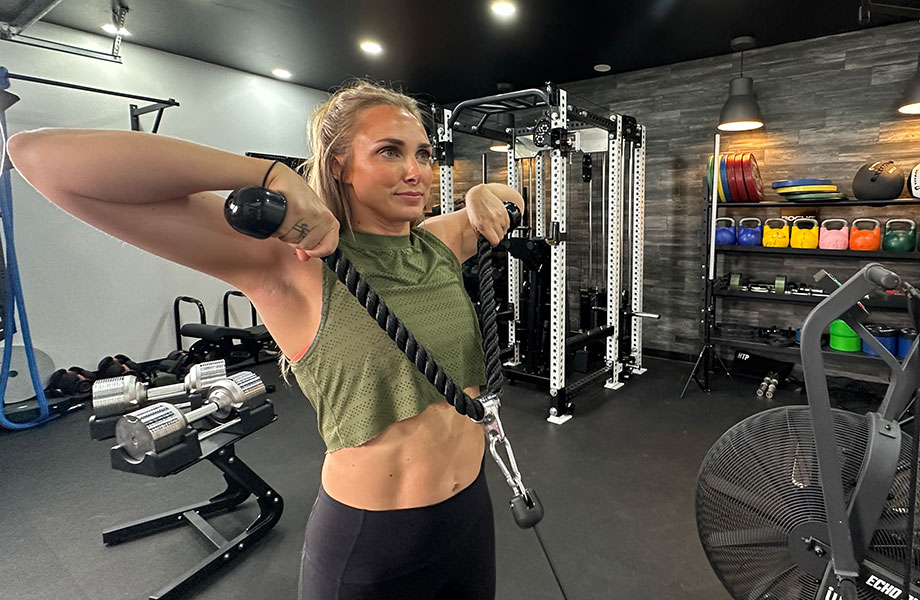
RELATED: Explosive Workouts
“High pulls are great, but it doesn’t serve the same purpose as the upright row,” says Kate. “Upright rows require control to keep the emphasis on the target muscle groups so you can build strength and muscle mass. Using momentum to ‘cheat’ the movement reduces that muscle activation, making the exercise less effective overall.”
So, for building your back and shoulder muscles most effectively, it’s crucial to control the barbell throughout the full range of motion, pulling it upward with your muscles during the concentric phase and guiding its controlled descent during the eccentric phase.
RELATED: How to Build Muscle
You also want to stay within a safe range of motion, specifically by not going too high. According to the Journal of Strength and Conditioning Research1, lifting the weights too high places strain on the rotator cuffs and may contribute to, cause, or aggravate existing shoulder impingement syndrome in affected individuals. To avoid, bring the weights to chest or shoulder height, allow the elbows to flare out to accommodate the motion, then bring it back down.
Common Upright Row Mistakes
Once you’re well-acquainted with the movement mechanics of the upright row, you can start progressing the heavier and heavier weights to fuel those gains. Here are some common mistakes to avoid as you scale up.
Using the Hips for Momentum
The goal of the barbell upright row is to pull a heavy weight upward, primarily using your delts, traps, and triceps. Using your hips to thrust the barbell into the air converts your upright row into a high pull. While that movement is a great tool for improving your conditioning, endurance, and power, it’s not going to give you as much muscle-building activation as the upright row.
RELATED: Conditioning Workouts
“Initiate the movement using your upper body muscles only,” says Kate Meier, CPT, USAW-L1, CF-L1. “Use those same muscles to control the bar’s descent and, if necessary, pause at the starting position before beginning the next repetition. The goal is to avoid bouncing the barbell at the bottom and inadvertently using our hips to assist the next rep. The movement should start and end using the upper body muscles only.”
Grip Too Narrow or Too Wide
Not to sound like Goldilocks here, but you must get that grip “just right” when performing the upright row. Going too wide diminishes the amount of power you’re capable of employing to move the weight while going too narrow increases the stress on your wrist joint.
RELATED: Best Wrist Wraps
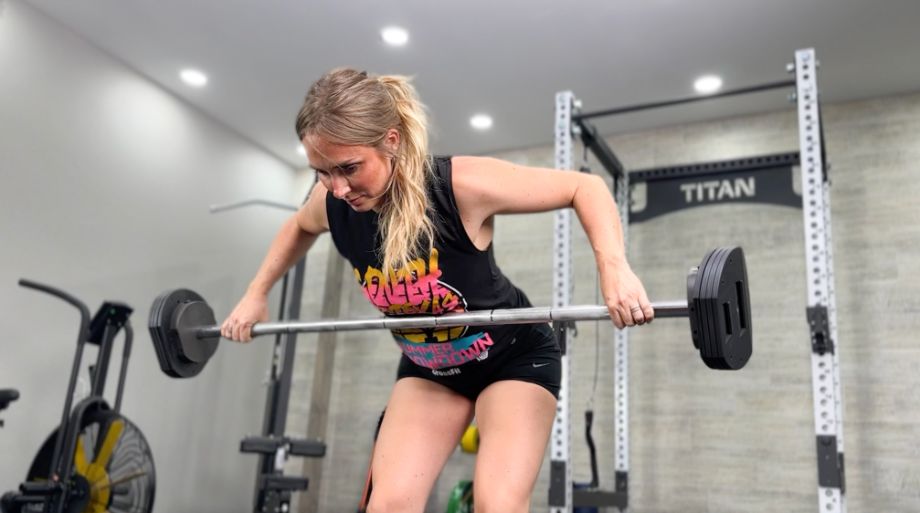
According to a 2013 study2 in the Journal of Strength and Conditioning Research, your grip width can determine where you receive the most muscle activation. The study determined that a wider grip, slightly wider than shoulder-width, increases activation in the deltoids and trapezius, while a more narrow grip offered reduced activity in these muscle groups but added assistance from the adjacent biceps brachii.
“Comfort is going to be crucial here, so try to find a grip width that feels comfortable for you and doesn’t put a strain on your wrists,” says Kate, “but keep in mind, you’ll get increased activation in the target muscle groups if you use a wide grip during the upright row.”
Uncontrolled Descent
Mustering enough strength to execute a perfect lift is invigorating. We muscle the bar through the concentric phase of the exercise, squeeze the contraction, and prematurely celebrate as we let the bar plummet through the eccentric phase, depriving ourselves of all that juicy muscle activation.
According to the British Journal of Sports Medicine3, “total strength and eccentric strength [increases] more significantly” during eccentric muscle contractions versus concentric muscle contractions.
“Exercising control during both the concentric and eccentric phase of the upright row is recommended,” says Kate, “but controlling the bar’s descent maximizes your muscle’s time under tension and overall increases the exercise’s effect on strength gain and hypertrophy.”
RELATED: Eccentric Training
Plus, letting a heavy barbell fall back down from shoulder height adds to your risk of injury, as a falling barbell that you need to stop will often pull your body forward, taking your spine out of alignment, or could slip from your grip and crash down onto your toes. Ouch!
Upright Row Variations
The barbell upright row is a beast for upper body, back, and shoulder workouts, but it’s not the only way to get in your reps. Here are some variations to keep your routine muy picante!
Dumbbell Upright Row
The movement pattern for barbell and dumbbell upright rows are basically identical, but there are some advantages to using dumbbells over barbells.
Most importantly, dumbbells allow for more flexibility with your positioning, alleviating stress on your wrist and shoulder joints and making for an overall more comfortable experience.
Using dumbbells enables you to convert the exercise into a unilateral movement, rowing one arm at a time to correct muscle imbalances and bilateral deficits.
To perform a dumbbell upright row, simply:
- Start with two dumbbells, held with your palms facing your body.
- Take a deep breath, brace your core, and exhale as you pull the barbell upwards.
- Squeeze your deltoids and trapezius muscles at the top.
- Slowly return the dumbbells to the starting position, controlling their descent.
RELATED: Best Dumbbells
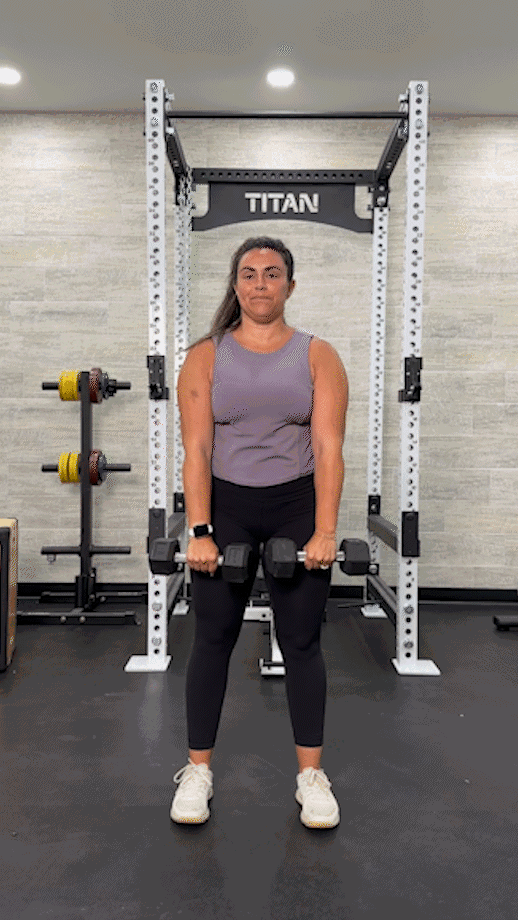
Cable Upright Row
How to do it:
- Set the pulley to the lowest position and fasten the attachment of your choice.
- Step back into position, facing the machine.
- Pull the attachment to your chin, squeezing your traps and delts at the top of the movement.
- Slowly lower attachment back down to the starting position.
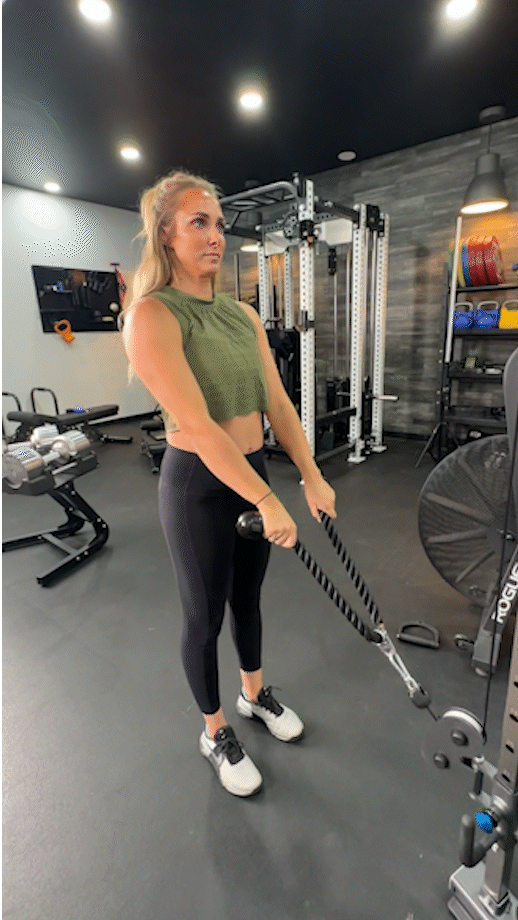
Single-Arm Upright Row
Single-arm upright rows involve performing the upright row with one arm at a time to focus all your attention and energy on one side before moving to the next. It’s great for fully maximizing the impact of each rep, correcting muscle imbalances, and eliminating bilateral deficits.
Dumbbells are a great choice for single-arm upright rows, but kettlebells, resistance bands, and even cable machines are possible to use for this unilateral exercise. For resistance band and cable upright rows, make sure to set that anchor point low.
RELATED: DIY Pulley System
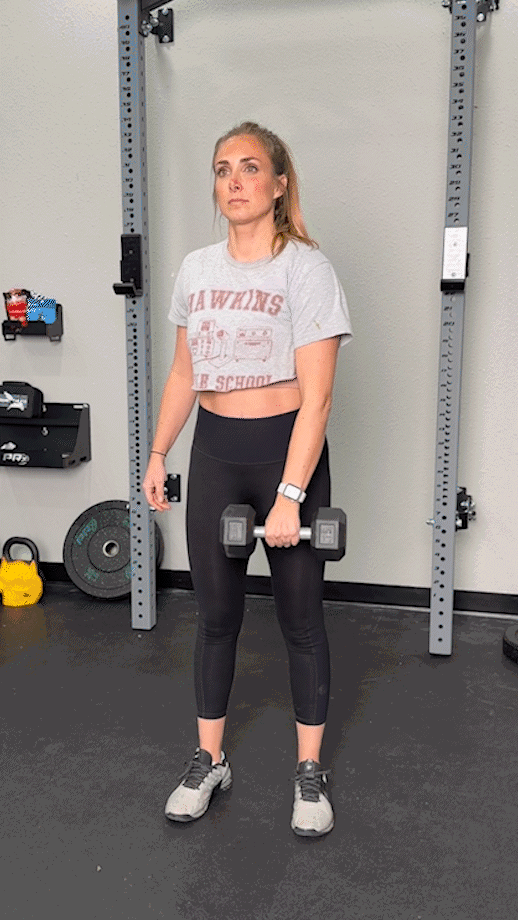
Sumo Deadlift High Pull
The sumo deadlift high pull seems like a name straight out of Mad Libs, but this compound exercise combines two tried-and-true movements to create a full-body exercise that hits muscle groups from head to toe.
The movement starts with the sumo deadlift, which involves deadlifting a loaded barbell with your feet wider than shoulder-width. Where the standard deadlift movement pattern terminates at approximately hip height, the sumo deadlift high pull transitions into a high pull, which involves pulling the barbell upward towards your chin until it reaches chest or shoulder height.
“Upright rows are a strict movement, but high pulls use momentum,” says Kate Meier, CPT, USAW-L1, CF-L1. “During the sumo deadlift high pull, you want to deadlift with intensity and use your hips to transfer that energy into the pull portion. Strict reps are possible, but you’ll struggle to get through high-rep sets if you don’t take advantage of this energy transfer and practice good economy of motion.”
How to do it:
- Take a wider stance than a standard deadlift with your toes pointing outward.
- Keeping your arms inside of your legs, take hold of the bar with an overhand grip.
- Lift the bar off the ground by pushing through your feet.
- Pull the bar to your chin, squeezing your traps at the top..
- Lower the bar with control, then hinge at your hips to place it back in the starting position.
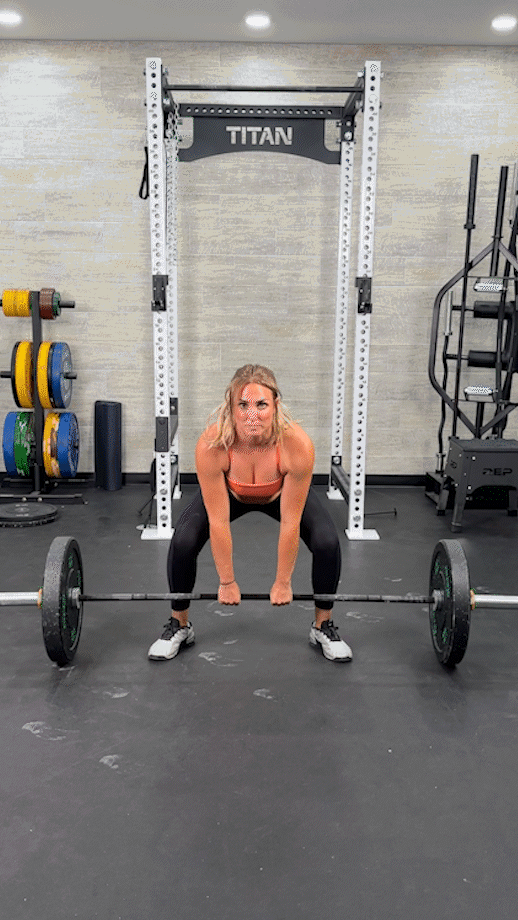
Upright Row: FAQs
What muscle does upright row work?
Upright rows hit mostly the same muscles as lateral raises, including the deltoids, trapezius, rhomboids, teres minor, triceps, biceps, and core.
RELATED: Best Deltoid Exercises
Is the upright row better than the shoulder press?
“Both the upright row and shoulder press are great moves for building upper body strength, but they target slightly different muscles,” says Kate Meier, CPT, USAW-L1, CF-L1, and GGR head of content. “The shoulder press provides more activation to the arms and rear delts, whereas the upright row hits the front and side delts to a greater degree.”
Because of this, the upright row functions more as an isolation exercise, while the shoulder or overhead press is classified as a compound movement. For bigger, badder shoulders, the upright row can’t be beat, but for overall strength, the shoulder press may reign supreme.
Is an upright row better than a bent-over row?
You might think you could easily compare the upright row to the bent-over barbell row. After all, they’re both called a “row,” both involve pulling, and both target upper body muscles—surely they’re similar, right?
Well, not exactly.
The bent-over row predominantly targets the back muscles, namely the latissimus dorsi, middle and lower trapezius, rhomboids, and posterior deltoids. Likewise, the upright row targets the anterior and lateral deltoids, upper trapezius, rhomboids, and teres minor.
Due to the bent-over positioning of the barbell row, you’re also going to get more activation from your lower body muscles, including the lower back, hips, glutes, and hamstrings. The positioning also allows for the lifter to generally move more weight than is possible for the upright row, making it a better strength-building exercise.
“Both the upright row and bent-over row have a place in strength and bodybuilding workouts,” says Kate Meier, CPT, USAW-L1, CF-L1, “but which works best for your purposes depends entirely on your goals. For the best results, try incorporating both exercises into your weekly routine.”
References
1. Kolber MJ, Cheatham SW, Salamh PA, Hanney WJ. Characteristics of shoulder impingement in the recreational weight-training population. J Strength Cond Res. 2014;28(4):1081-1089. doi:10.1519/JSC.0000000000000250
2. McAllister MJ, Schilling BK, Hammond KG, Weiss LW, Farney TM. Effect of grip width on electromyographic activity during the upright row. J Strength Cond Res. 2013;27(1):181-187. doi:10.1519/JSC.0b013e31824f23ad
3. Roig M, O’Brien K, Kirk G, et al. The effects of eccentric versus concentric resistance training on muscle strength and mass in healthy adults: a systematic review with meta-analysis. Br J Sports Med. 2009;43(8):556-568. doi:10.1136/bjsm.2008.051417


